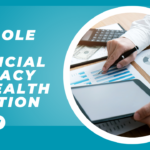As education costs continue to rise, many families are exploring various financing options to cover these expenses. One option that is often considered is using a property loan. But can a property loan be used to cover education costs? In this guide, we’ll explore how property loans work, the advantages and disadvantages of using them for education, and what to consider before taking this route.
Table of Contents
Understanding Property Loans
Definition and Types of Property Loans
A property loan is a loan that is secured by real estate, typically a home. This type of loan allows homeowners to borrow against the equity in their property, which is the difference between the current market value of the home and the outstanding balance on the mortgage. There are several types of property loans, including home equity loans, home equity lines of credit (HELOCs), and mortgage refinancing.
- Home Equity Loan: A home equity loan is a lump-sum loan that is repaid over a fixed period, typically with a fixed interest rate. The amount you can borrow is usually based on a percentage of your home’s appraised value minus any outstanding mortgage balance.
- Home Equity Line of Credit (HELOC): A HELOC is a revolving line of credit that allows you to borrow funds as needed, up to a certain limit. The interest rate on a HELOC is usually variable, meaning it can change over time.
- Mortgage Refinancing: Refinancing involves replacing your existing mortgage with a new one, often with different terms. You can take out a new mortgage for a higher amount than what you currently owe and use the difference to cover other expenses, such as education costs.
How Property Loans Work
When you take out a property loan, the lender places a lien on your property, which serves as collateral for the loan. This means that if you fail to repay the loan, the lender has the right to foreclose on your property to recover the amount owed. The loan amount you can access is typically determined by the equity you have in your home, the lender’s policies, and your creditworthiness.
The application process for a property loan usually involves a thorough review of your financial situation, including your credit score, income, and existing debts. Lenders will also require an appraisal of your property to determine its current market value.
Can You Use a Property Loan for Education Costs?
Legal and Financial Considerations
In many cases, you can use a property loan to cover education costs, but there are legal and financial considerations to keep in mind. There are generally no restrictions on how you can use the funds from a home equity loan or HELOC, so using them for education expenses is permissible. However, it’s essential to be aware of the risks and responsibilities that come with this choice.
When using a property loan for education costs, you’re converting an unsecured debt (like student loans) into secured debt, where your home is at risk if you can’t make the payments. It’s crucial to evaluate whether this strategy aligns with your financial situation and long-term goals.
Pros
One of the primary advantages of using a property loan for education costs is the potential for lower interest rates compared to traditional student loans or personal loans. Home equity loans and HELOCs often have lower interest rates because they are secured by your property. This can make the monthly payments more manageable and reduce the overall cost of borrowing.
Another benefit is the ability to borrow a larger amount than what might be available through other loan types. If you have significant equity in your home, you may be able to cover not just tuition but also other education-related expenses, such as housing, textbooks, and even living expenses.
Additionally, the interest paid on a home equity loan or HELOC may be tax-deductible, depending on how the funds are used and current tax laws. This could provide further financial relief when it comes time to file your taxes.
Cons
While the potential benefits are appealing, there are also significant risks to consider. The most critical disadvantage is that your home is used as collateral. If you encounter financial difficulties and are unable to make your loan payments, you could face foreclosure and lose your home. This risk makes property loans a less attractive option for many people, especially those who are already struggling with their finances.
Another drawback is that property loans can lead to long-term debt. While student loans are often structured with a longer repayment term and more flexible repayment options, property loans may not offer the same level of flexibility. If you’re unable to repay the loan within the agreed terms, you could be stuck with debt that affects your financial health for years to come.
Finally, while the interest rates on property loans are generally lower than unsecured loans, they are still subject to market fluctuations, especially in the case of HELOCs with variable interest rates. This could lead to higher payments over time, adding financial strain.
Steps to Use a Property Loan for Education
Assessing Your Financial Situation
Before deciding to use a property loan to cover education costs, it’s essential to assess your financial situation carefully. Start by calculating how much equity you have in your home and how much you would need to borrow to cover education expenses. Consider your current income, existing debts, and other financial obligations. It’s important to ensure that you have a stable source of income to make the loan payments consistently.
Next, evaluate the potential impact on your long-term financial goals. Will taking out a property loan for education delay your plans to pay off your mortgage, save for retirement, or achieve other financial milestones? Understanding the full picture will help you make an informed decision.
Application Process
Once you’ve decided that a property loan is the right option for you, the application process begins. The first step is to shop around for lenders and compare interest rates, fees, and loan terms. It’s a good idea to obtain quotes from multiple lenders to ensure you’re getting the best deal.
After selecting a lender, you’ll need to complete the loan application, which will require providing detailed information about your finances, including income, debts, and assets. The lender will also order an appraisal of your home to determine its value and the amount of equity available.
Upon approval, you’ll work with the lender to finalize the loan terms and close the loan. This process typically involves signing a variety of documents and agreeing to the repayment schedule. Once the loan is finalized, the funds will be disbursed, and you can use them to cover education costs.
Managing Loan Repayments
Managing the repayments on your property loan is crucial to maintaining your financial stability. Start by creating a budget that accounts for the monthly loan payments, as well as any other expenses related to your education. It’s important to stay disciplined with your spending to ensure that you can meet your repayment obligations.
If your loan has a variable interest rate, keep an eye on market conditions and be prepared for potential changes in your monthly payment amount. Consider making extra payments when possible to reduce the principal balance and shorten the repayment period. This strategy can save you money on interest and help you pay off the loan faster.
Alternatives to Property Loans for Education Costs
Student Loans
Traditional student loans are the most common way to finance education costs. Federal student loans often come with lower interest rates and more flexible repayment options than property loans. They also offer benefits such as income-driven repayment plans and loan forgiveness programs, which can provide significant relief if you encounter financial difficulties.
Personal Loans
Personal loans are another option to consider for education costs. These loans are typically unsecured, meaning they don’t require collateral, but they often come with higher interest rates than property loans. However, personal loans may offer more flexible terms and quicker approval processes, making them a viable alternative if you prefer not to use your home as collateral.
Scholarships and Grants
Scholarships and grants are forms of financial aid that don’t need to be repaid, making them an excellent option for reducing education costs. Many organizations offer scholarships based on academic performance, financial need, or specific areas of study. Researching and applying for these opportunities can significantly reduce the amount you need to borrow.
Final Considerations and Expert Tips
Things to Think About Before Borrowing
Before taking out a property loan to cover education costs, consider your financial stability, the risks involved, and how this decision fits into your long-term financial plan. Make sure you understand the full terms of the loan, including interest rates, repayment schedules, and potential penalties for late payments or default.
It’s also wise to think about the opportunity cost of using your home equity for education rather than other purposes, such as home improvements or retirement savings. Weigh the potential benefits against the risks to determine if this is the best financial strategy for you.
Expert Advice
Financial experts often advise against using property loans for education unless you have a solid repayment plan and are confident in your ability to make the payments. It’s important to explore all other financing options first, including scholarships, grants, and federal student loans, before resorting to a property loan.
If you decide to proceed with a property loan, consider working with a financial advisor to ensure that you’re making the best decision for your situation. An advisor can help you understand the long-term implications of the loan and develop a strategy to manage your finances effectively.
Conclusion
Using a property loan to cover education costs can be a viable option, but it comes with significant risks and responsibilities. Lower interest rates and the ability to borrow larger amounts are attractive benefits, but the potential loss of your home if you can’t make payments is a serious consideration. Before making a decision, carefully assess your financial situation, explore alternative financing options, and seek professional advice to ensure you’re making the best choice for your future.










